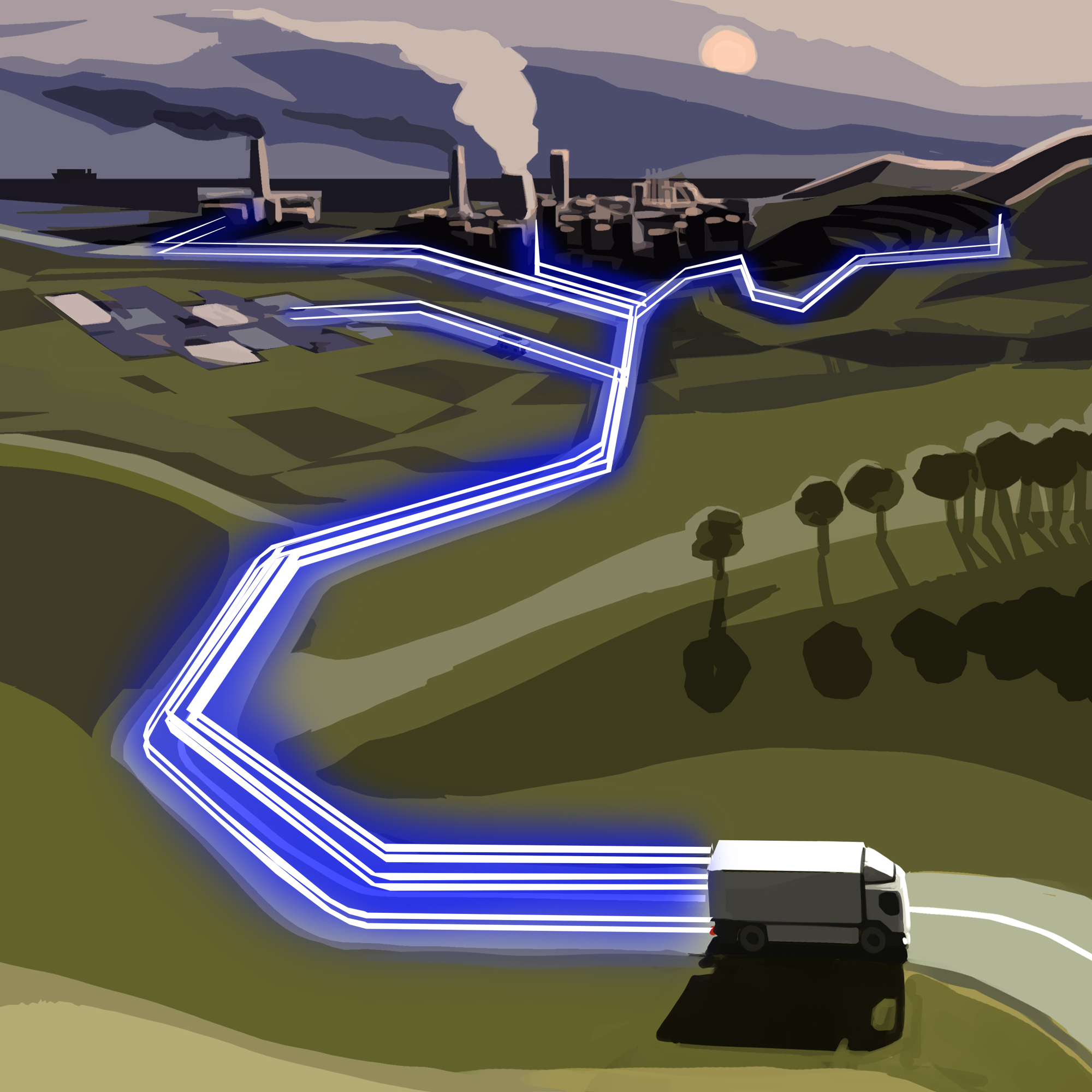5 myths and misconceptions about electric trucks
![Réseau électrique]() MYTH NO. 1: THE POWER GRID WILL NOT BE ABLE TO COPE WITH THE INCREASE IN DEMAND DUE TO THE PROLIFERATION OF ELECTRIC TRUCKS
MYTH NO. 1: THE POWER GRID WILL NOT BE ABLE TO COPE WITH THE INCREASE IN DEMAND DUE TO THE PROLIFERATION OF ELECTRIC TRUCKS
There is every reason to believe that the power grid will be able to absorb the increased demand as the use of electric vehicles expands. If by 2040, 75% of the 12.5 million trucks in the European fleet are battery-powered electric trucks, an additional 700 TWh/year of electricity will need to be generated, which would require an increase in European electricity production of 0.9% per year between now and 2040. This percentage corresponds to the natural and anticipated growth of electricity producers (between 1990 and 2018, electricity production in Europe increased by 26.3% or 0.93% per year - source Eurostat).
This calculation is based on the assumptions made by the European Automobile Manufacturers’ Association - ACEA in their study on the impact of electric vehicles over 3.5 tonnes on electricity production in Europe, detailed as follows:
1 - There will be 12.6 million trucks, coaches and buses over 3.5 tonnes in Europe by 2040.
2 - The average electricity consumption will be 1.1 kWh/km in 2050 based on the same fleet structure as today and assuming that the annual distance travelled in 2050 will be the same as today (43,000 km / vehicle / year).
3 - Average efficiency of a battery charger: 92%
4 - Efficiency of the electricity grid: 90% (assumption)
5 - 75% of the fleet will be electrified in 2040, the remaining 25% will be made up of vehicles running on hydrogen, biodiesel and biomethane.
(5)*(1)*(2)*(3)*(4) = 540 TWh/year. Electricity consumption in Europe in 2018 was 2 800 TWh. This implies an increase of 540 TWh / 2,800 TWh = 19% over 20 years, or 0.9% per year.
As far as the French electricity network is concerned, ENEDIS carried out a study in 2019, showing that the integration of electric mobility will represent less than 10% of the total investments anticipated over the period for network maintenance between now and 2035.
Moreover, in the longer term, electric mobility even represents an asset for the power grid, as the fact that the electricity not used by vehicles is fed back into the grid at the end of the day ("smart grid") will partially compensate for the intermittent nature of solar and wind power.
However, we all know that energy production has an impact on the environment, so let's all be mindful of our energy consumption, as responsible citizens, to combat global warming. The most sustainable energy is the energy we don't use.
![Coût véhicule électrique]() MYTH NO. 2: ELECTRIC VEHICLES ARE MUCH MORE EXPENSIVE THAN COMBUSTION VEHICLES
MYTH NO. 2: ELECTRIC VEHICLES ARE MUCH MORE EXPENSIVE THAN COMBUSTION VEHICLES
It is true that in 2021, electric vehicles are more expensive to buy. But in the end, running costs are much lower and overall, you come out on top! This is largely due to the ease of maintenance of the engines, which means that maintenance costs for electric trucks are generally 30% lower than for their internal combustion counterparts. The cost of energy is another advantage in favour of electric trucks. Since electricity is half the price per kilometre of traditional fuel, this is another area where savings are achieved.
In addition, purchase subsidies (tax relief or direct grants) are often available in the vast majority of EU states or regions. In July 2020, the European Automobile Manufacturers' Association - ACEA published a document listing the various support schemes for the purchase and ownership of individual electric vehicles in the 27 countries of the European Union and the United Kingdom. Although there is no similar summary document for electric trucks to date, we know that a range of subsidies are offered by most EU countries. For example, in July 2020, these subsidies amounted to up to 60% of the cost of an electric truck under 16 tonnes in France or up to 500,000 euros per year per company in Germany.
Finally, the batteries for electric vehicles are now mass-produced. Their weight and size are decreasing, and recycling is becoming more widespread, resulting in lower overall production costs for electric trucks. By 2030, the total cost of ownership (TCO) of an electric truck for distribution will be equivalent to or even lower than that of a combustion engine truck, with the added advantages of silence, zero emissions, flexibility and comfort, and respect for the environment!
![Autonomie véhicule électrique]() MYTH NO. 3: ELECTRIC TRUCKS DO NOT HAVE SUFFICIENT RANGE TO MEET THE NEEDS OF TRANSPORTERS
MYTH NO. 3: ELECTRIC TRUCKS DO NOT HAVE SUFFICIENT RANGE TO MEET THE NEEDS OF TRANSPORTERS
There's much talk about the range of electric vehicles, but the most important thing is not necessarily to offer the greatest range. Instead, it's about offering a range suited to the real needs of transporters, whether for urban or regional distribution, worksite trucks or waste collection. For electric truck manufacturers such as Renault Trucks, it is a question of tailoring vehicles to the specific needs of hauliers. Each type of route and application corresponds to a particular model of electric truck (16, 19 or 26 tonnes), with the right number of batteries (from three to six, although most users carry four).
Today, the maximum range of a Renault Trucks electric distribution truck is suitable for most uses, provided that drivers change their habits slightly. With an electric vehicle, drivers prepare their rounds, anticipate distances and charge the vehicle when they return to the depot in the evening. What's more, partial charging is always an option during the job.
Finally, it is also important to remember that effective braking can save between 20 and 40% of energy. Good driving habits will extend the vehicle's range even further. The range of a Renault Trucks electric truck can reach 400 km depending on the model of vehicle and its use. And in any case, we guarantee all our customers - such as Transports Delanchy - the necessary power regardless of the age of the batteries. Renault Trucks contractually guarantees to maintain up to 80% of the energy in the batteries of its electric trucks for the entire duration of the contract. No other manufacturer offers this!
![Recharge camion électrique]() MYTH NO. 4: IT'S COMPLICATED TO CHARGE AN ELECTRIC TRUCK
MYTH NO. 4: IT'S COMPLICATED TO CHARGE AN ELECTRIC TRUCK
In fact, charging an electric truck is very easy! All you need is an industrial three-phase socket (400 volts - 22 kW). Vehicles are fully charged overnight at the depot and the driver's working day can begin.
Of course, for even greater operational flexibility, partial charging can also be carried out on the job, for example during the driver's breaks. With the networks of charging points developing rapidly in Europe, this operation will become increasingly easy in the months and years to come. It should be noted that Renault Trucks, through the Volvo Group and the agreement signed with Daimler Truck and the TRATON Group, aims to provide an efficient public charging network for its battery-electric truck customers throughout Europe.
Another option for transporters is to invest in a 150 KW fast charging station (as recommended by Renault Trucks), which will fully charge the electric truck in just one to two hours.
In another very encouraging development, the European Automobile Manufacturers Association - ACEA, published a white paper in May 2021 detailing the calls from all member manufacturers to increase the number of charging points for electric trucks across Europe. The aim is to have 10,000 to 15,000 public charging points by 2025 and 40,000 to 50,000 points by 2030. In addition, the future power standard could be 1 MW, for charging in just a few minutes! This would enable electric truck drivers to charge their vehicles during their mandatory 45-minute break every 4.5 hours.
Finally, the number of batteries on board electric trucks will increase, thereby extending the range. Renault Trucks electric trucks currently have between three and six batteries (offering up to 400 km), although most of our vehicles currently carry four (see myth no. 3 on the range of electric vehicles).
MYTH NO. 5: ELECTRIC TRUCK BATTERIES POLLUTE![Batteries des camions électriques]()
To effectively measure the environmental footprint of electric batteries, the entire life cycle must be taken into account, "from cradle to grave", as the saying goes. Three major points need to be analysed, namely the manufacture of the batteries themselves, which generates greenhouse gases (CO2, N20, CH4, etc.), the extraction of raw materials (the ecological impact of which varies according to the minerals used), and finally their second life and recycling.
The good news is that the potential for global warming due to battery production is rapidly offset by an electric truck! For example, the manufacture of the four 66 kWh battery packs in the Renault Trucks E-Tech D currently emits 20 tonnes of CO2, while its use saves 61 tonnes of CO2 per year. The CO2 emissions due to the battery production are therefore offset after the first four months of the electric truck's life.
Renault Trucks closely monitors the supply chain for the extraction of minerals used in electric batteries, such as lithium, nickel, manganese, copper and cobalt. The aim is to safeguard conditions, whether environmental (soil protection, biodiversity, water and waste management) or societal (health, safety, labour rights, human rights), for the extraction and transformation of these minerals.
Finally, after their life in an electric vehicle, with 80% of their initial energy still available, the batteries will have a second life in stationary applications. They can be coupled with renewable energy sources or used to balance the electricity grid. Later, when they no longer function at all, they will be recycled. The European Union is preparing a new regulation for 2022, in which equipment manufacturers will be responsible for tracking, collecting and recycling all batteries, recycling at least 70% of their weight by 2030 and achieving recycling rates of 94% for cobalt, nickel and copper and 70% for lithium.

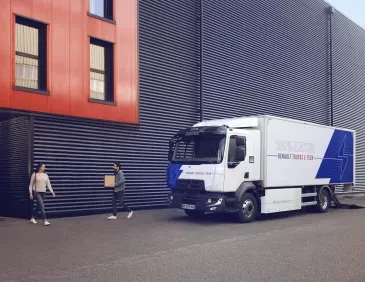
 MYTH NO. 1: THE POWER GRID WILL NOT BE ABLE TO COPE WITH THE INCREASE IN DEMAND DUE TO THE PROLIFERATION OF ELECTRIC TRUCKS
MYTH NO. 1: THE POWER GRID WILL NOT BE ABLE TO COPE WITH THE INCREASE IN DEMAND DUE TO THE PROLIFERATION OF ELECTRIC TRUCKS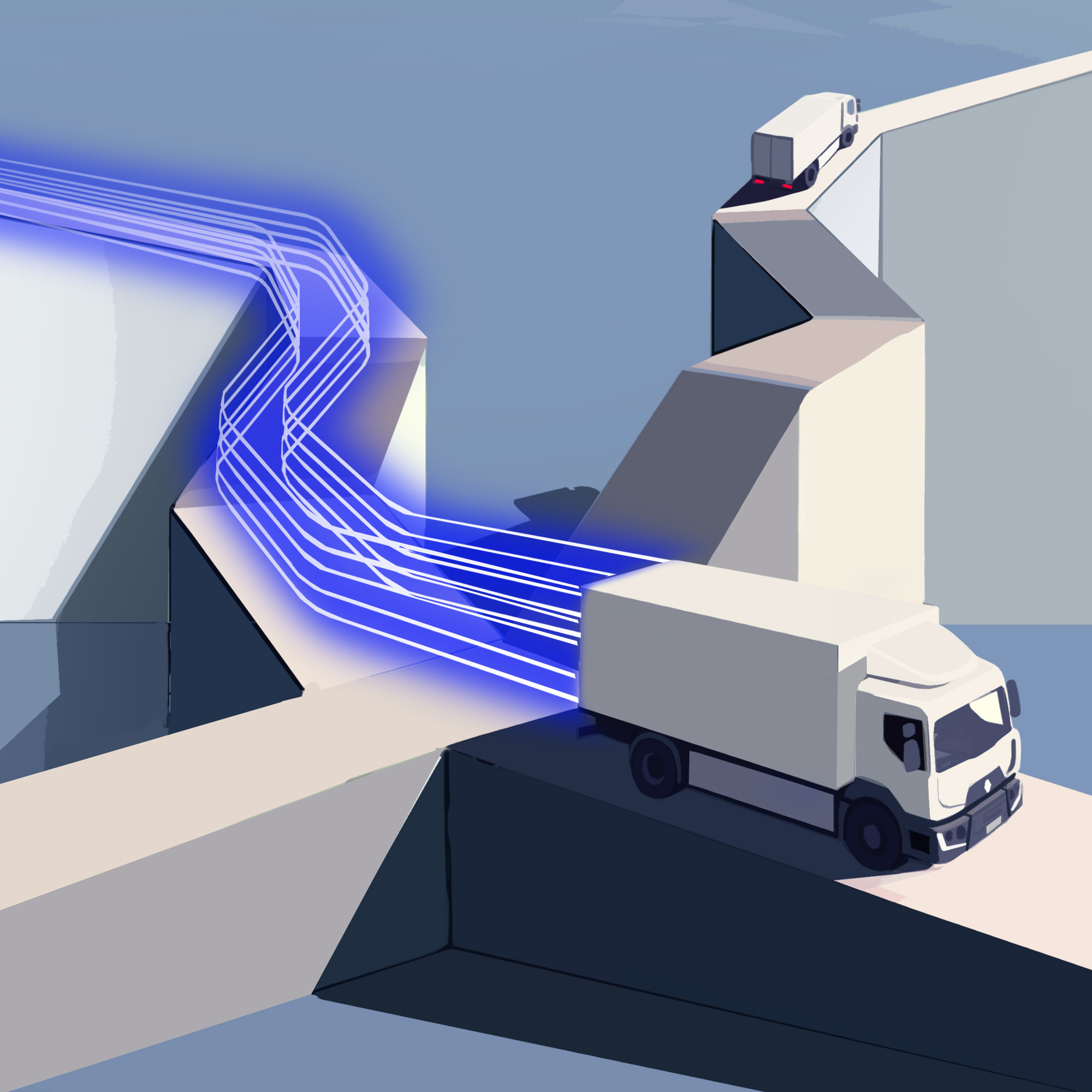 MYTH NO. 2: ELECTRIC VEHICLES ARE MUCH MORE EXPENSIVE THAN COMBUSTION VEHICLES
MYTH NO. 2: ELECTRIC VEHICLES ARE MUCH MORE EXPENSIVE THAN COMBUSTION VEHICLES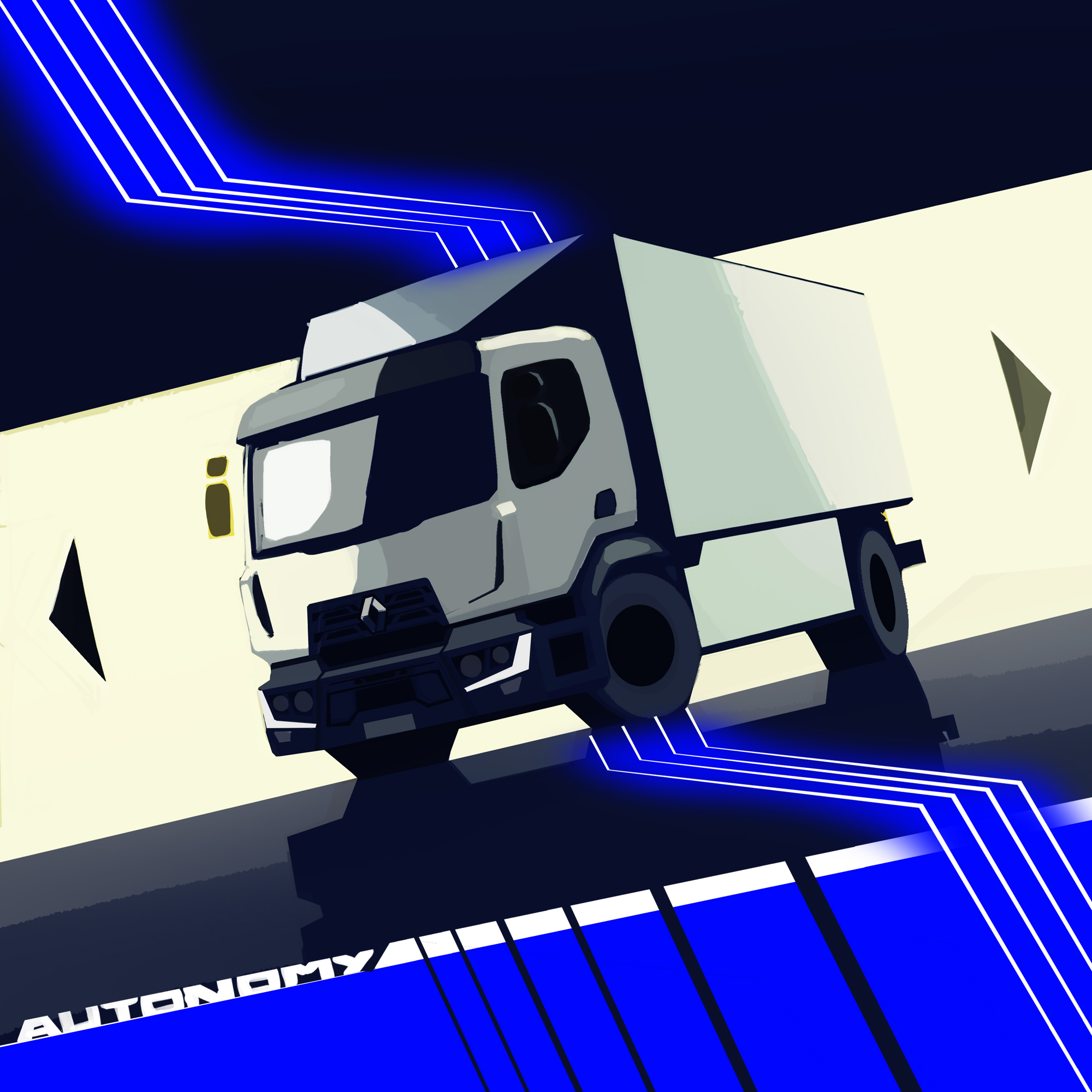 MYTH NO. 3: ELECTRIC TRUCKS DO NOT HAVE SUFFICIENT RANGE TO MEET THE NEEDS OF TRANSPORTERS
MYTH NO. 3: ELECTRIC TRUCKS DO NOT HAVE SUFFICIENT RANGE TO MEET THE NEEDS OF TRANSPORTERS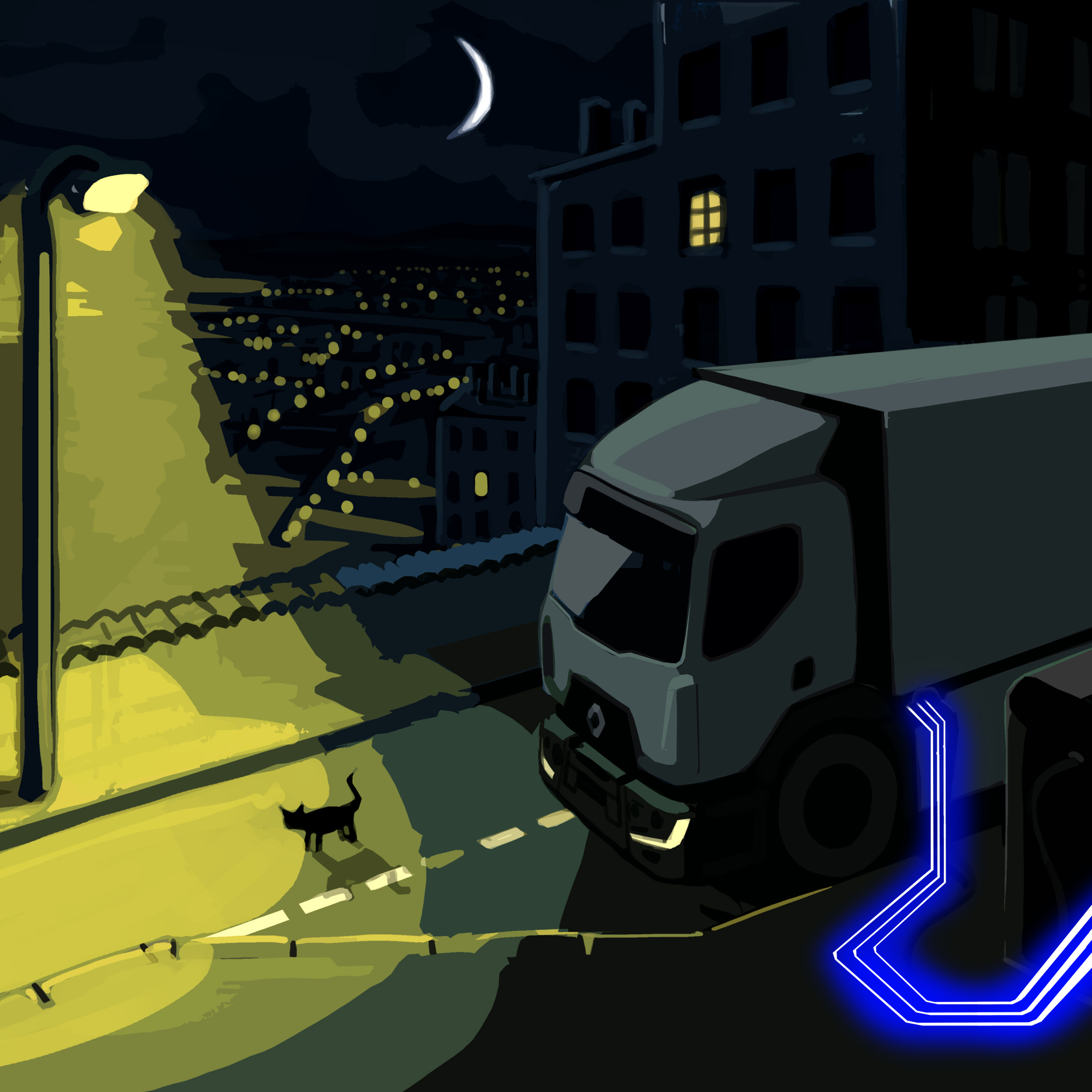 MYTH NO. 4: IT'S COMPLICATED TO CHARGE AN ELECTRIC TRUCK
MYTH NO. 4: IT'S COMPLICATED TO CHARGE AN ELECTRIC TRUCK